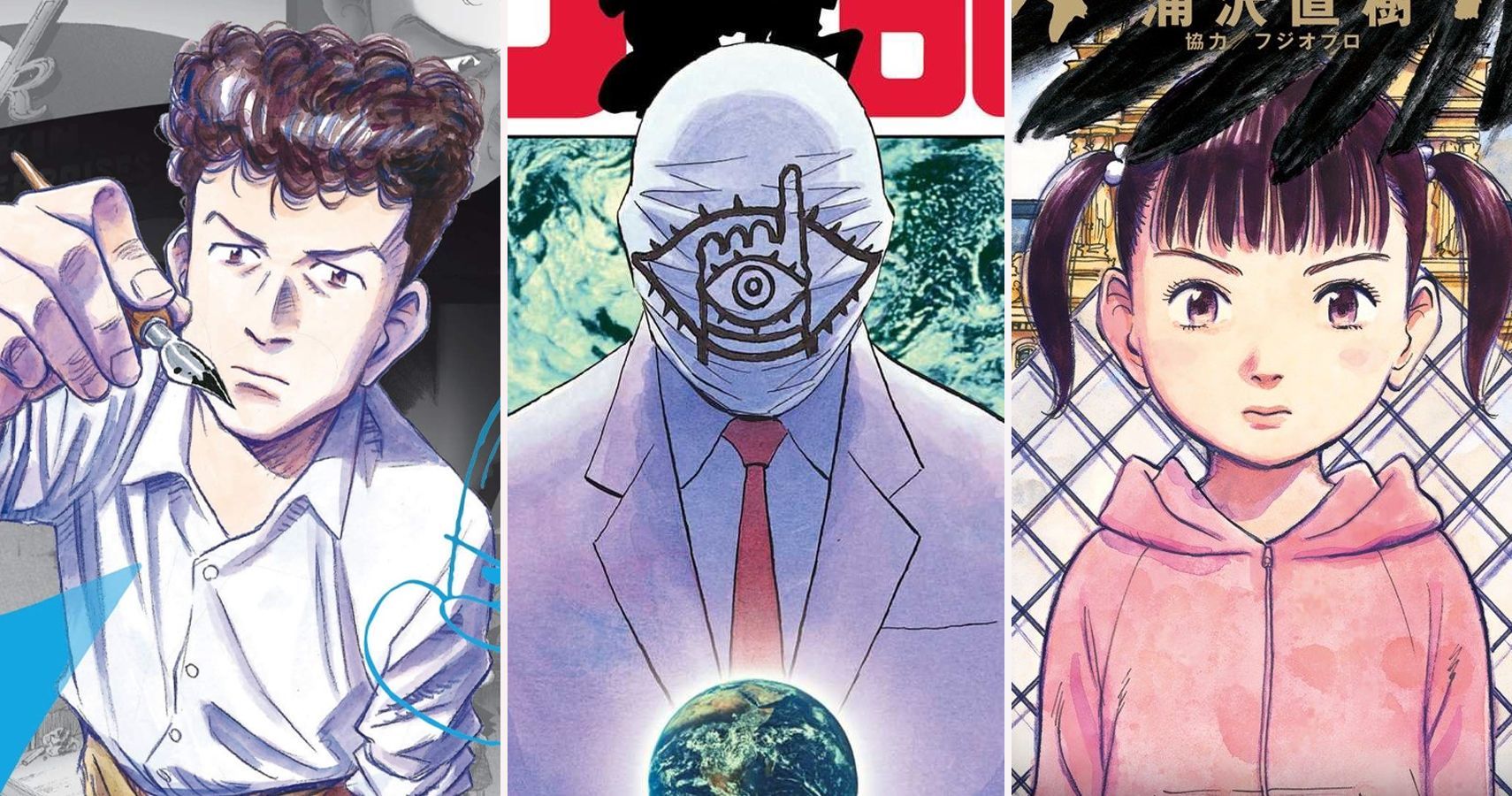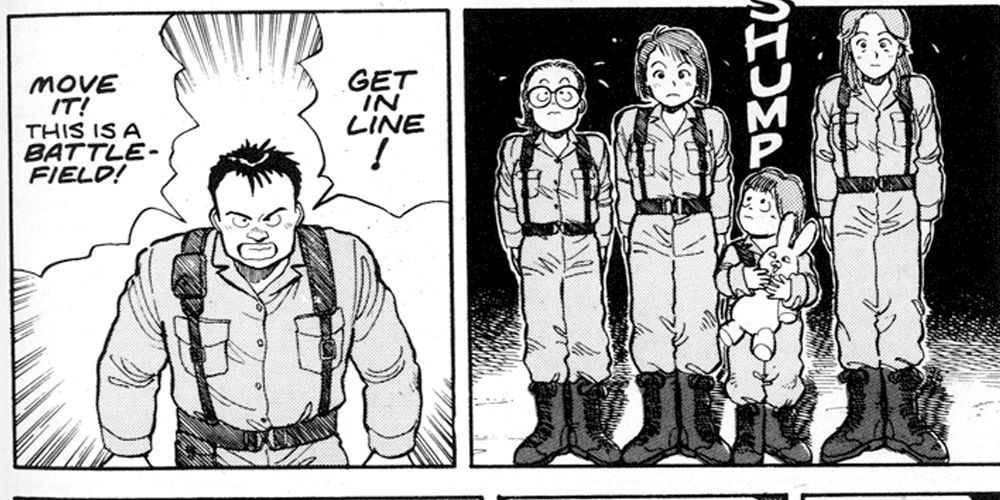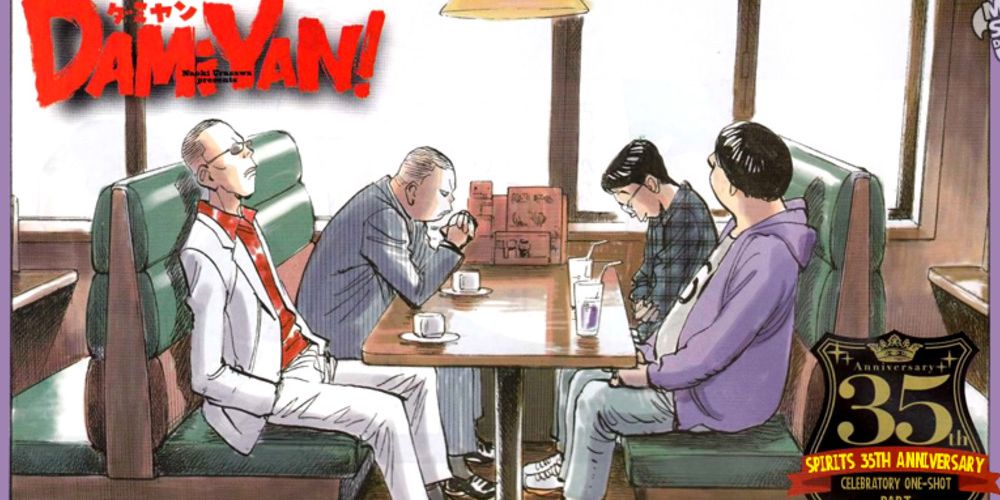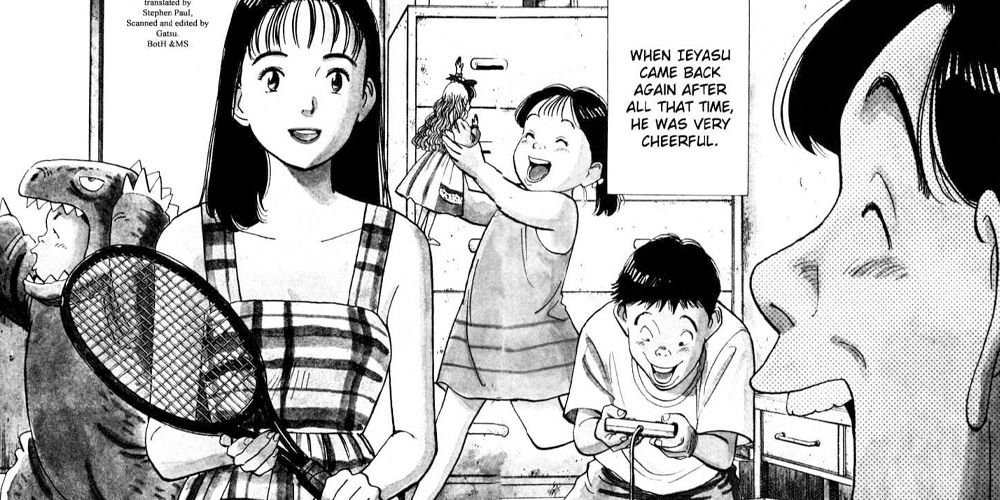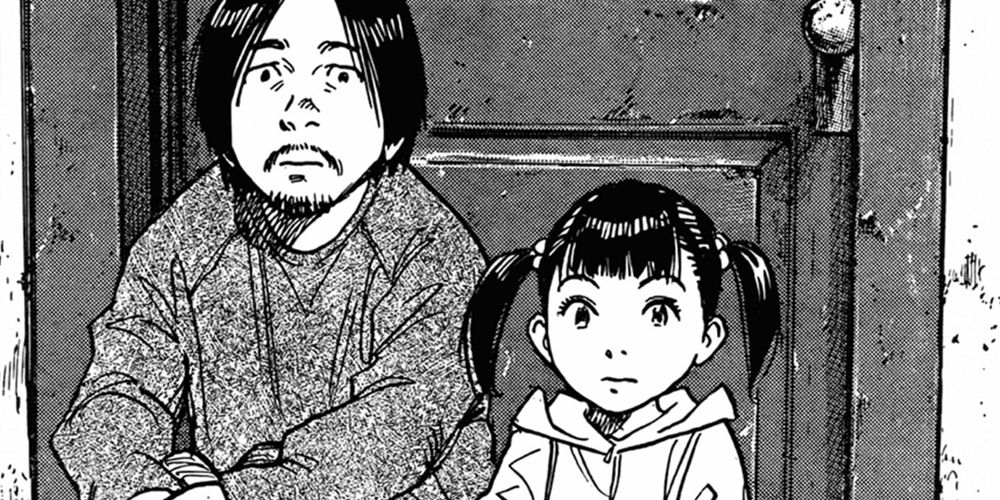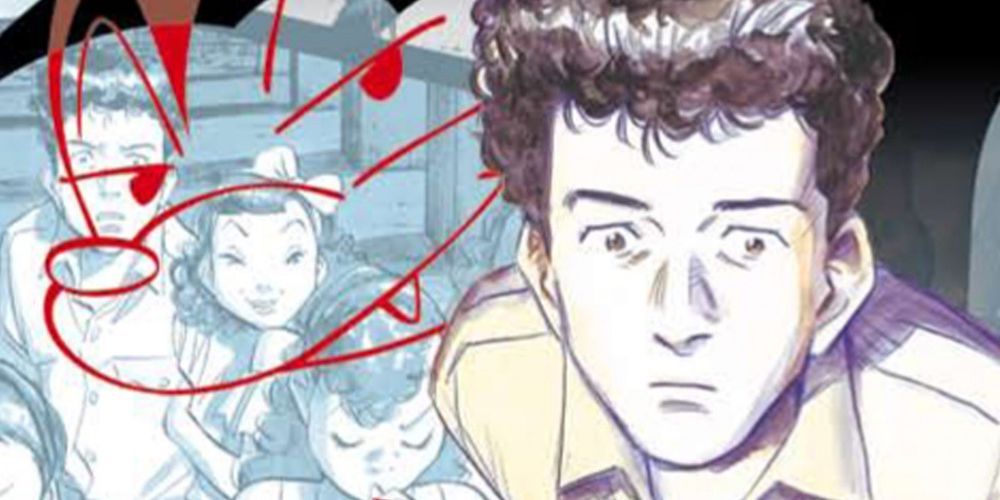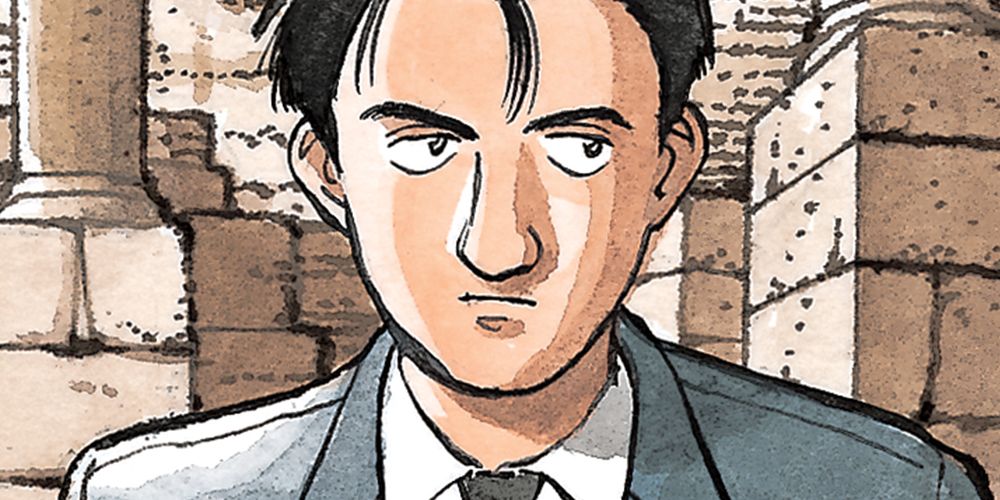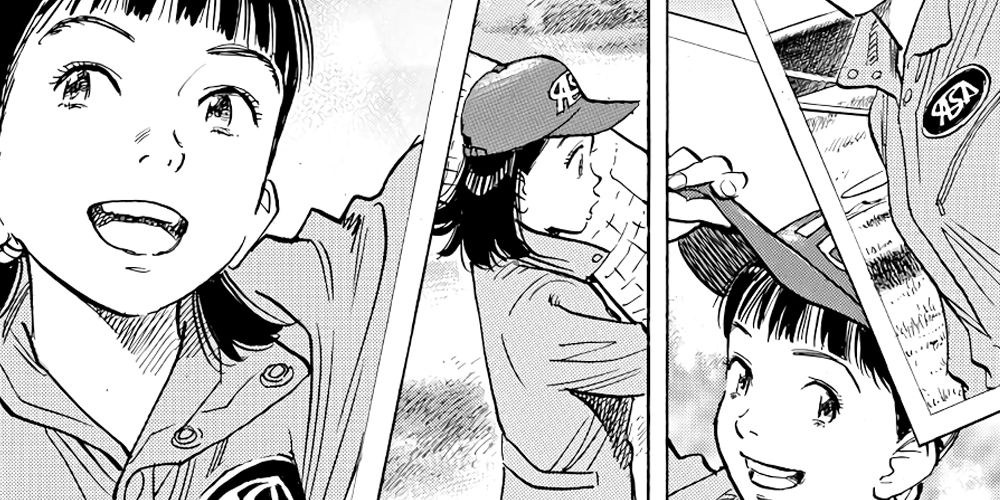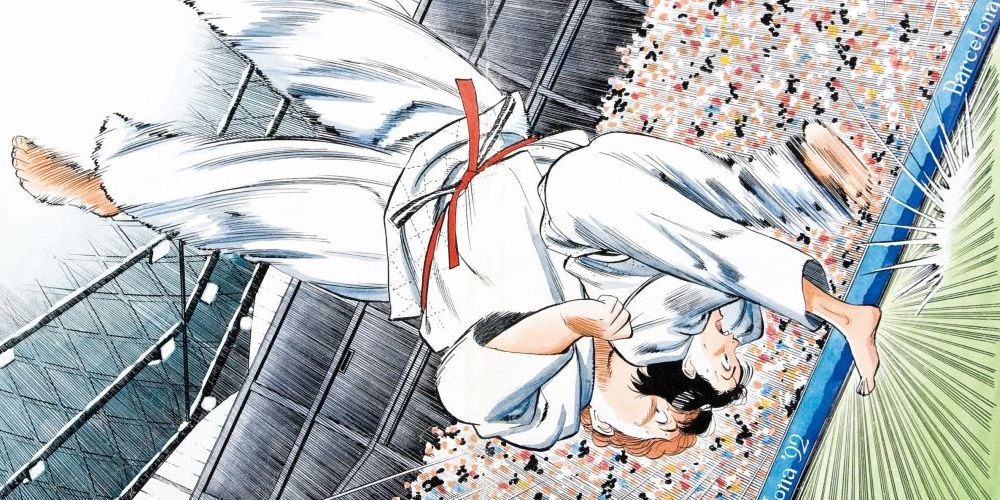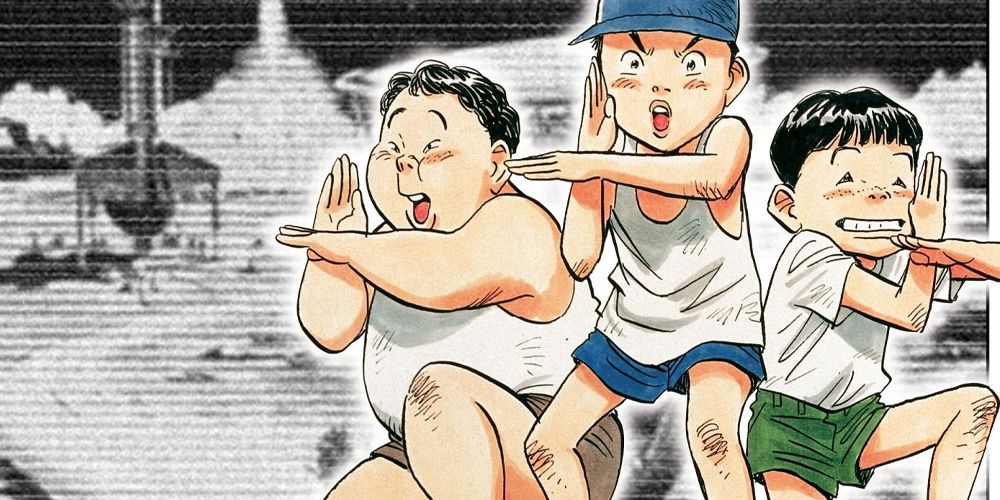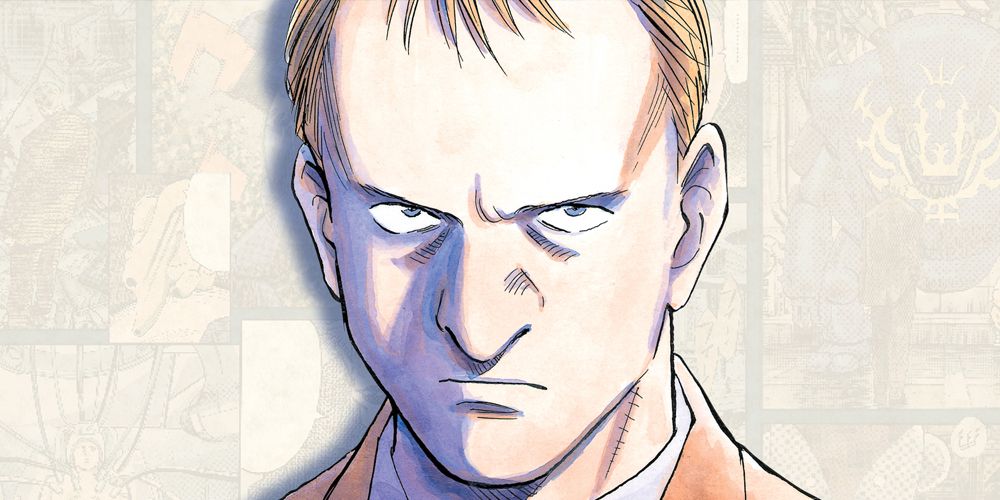Hailed as a master of suspense and mystery, Naoki Urasawa has itched his name into manga history. Ever since making his debut in 1981's Return short story, Urasawa has been crafting gripping narratives that often center around realistic characters dealing with extraordinary situations that are far bigger than them. Monster is undoubtedly the author's most famous creation, with the 1994 manga representing a shift towards more cinematic and grounded storytelling for Urasawa.
Due to anime adaptations of Urasawa's works being either old or nonexistent, a lot of the author's other projects tend to fly under the radar unless someone is particularly interested in manga. In honor of one of the best mangaka to ever grace the scene, here are Urasawa's 10 greatest works that are not called Monster.
10 Pineapple Army (1985-88)
As Urasawa's first serialized manga, Pineapple Army is worth tracking down simply because it serves as an interesting historical artifact that shows the author's influences more clearly than any of his other big projects. Following a mercenary group consisting of a former United States Marine and a group of young girls, Pineapple Army's episodic format makes it relatively easy to digest, although it lacks the sophistication of Urasawa's later work.
Pineapple Army does not have a unique identity and is Urasawa's least ambitious or interesting creation, even if it is perfectly readable.
9 DAMiYAN! (2016) & Other One-Shots
Along with 10 serialized projects, Naoki Urasawa has written a number of one-shot manga over the years. 2016's DAMiYAN! blends supernatural elements with gangster tropes to create a short but entertaining story that features, as one would expect, solid art.
When it comes to older one-shots, 1987's Dancing Policeman tells an amusing tale about a failure of an officer whose efforts to help people often go underappreciated, while 1988's NASA is a decent collection of 12 short stories.
8 Happy! (1993-99)
Along with intense tales centering around conspiracy, corruption, and human nature, Naoki Urasawa has also written a few sports manga. In many ways, Happy! strikes a middle-ground between the author's more conventional earlier work and the character studies that would come to define his greatest projects.
Happy! follows a girl who drops out of school to become a pro tennis player in order to pay off her brother's debt. If she fails, Miyuki Umino will be forced into a life of prostitution. Perhaps Urasawa's most depressing manga ever, Happy! has some great moments that are dragged down by shallow antagonists, an overly long storyline, a focus on idol culture that never quite jells with the sports setting, and a series of matches that grow progressively duller. While still quite good, Happy! can be a tiring read.
7 Mujirushi: The Sign Of Dreams (2017-18)
Lasting for only nine chapters, Mujirushi: The Sign of Dreams is a relatively quick read that will be receiving an official English release later this year. Following a father and daughter who are desperate for a way out of debt due to a string of bad decisions by the former, Mujirushi: The Sign of Dreams is a peculiar but interesting read packed with timely social and political references, psychological drama, and traces of black humor.
This 2017 miniseries should be nobody's introduction to Urasawa but it is worth reading for fans of the mangaka.
6 Billy Bat (2008-16)
Billy Bat had the tough task of following up Monster and 20th Century Boys as Urasawa's next big project. While it does not quite manage to reach the lofty heights of those two masterpieces, Billy Bat is nevertheless a fascinating manga that blends popular conspiracy theories and an engrossing mystery to craft a narrative that bends and twists seemingly every other page.
When Kevin Yamagata, a comic book author known for "Billy Bat," learns that he might have plagiarized the idea from a Japanese author, he heads to Japan to try and get permission to use the character. However, Kevin is dragged into a strange conspiracy as he learns that Billy Bat is far more than a comic book creation. Billy Bat's plot is somewhat unfocused and loses steam over the course of its 165 chapters; that said, the manga's first half is incredibly strong and it has some great arcs.
5 Master Keaton (1988-94) & Master Keaton Remaster (2012-14)
Turned into an anime by Madhouse, the same studio who handled the adaptation of Monster, Master Keaton is an exhilarating adventure series about a former SAS agent turned history teacher/archaeologist who travels around Europe as an insurance agency's detective.
With over 140 chapters split into 18 volumes and also a short sequel, Master Keaton tackles weighty themes while generally maintaining an accessible tone through its endearing cast of characters and episodic nature.
4 Asadora! (2018-)
Currently ongoing, Renzoku Manga Shōsetsu Asadora! is Urasawa's best work since Billy Bat's first couple of years. In 2020, a monster threatens to destroy Tokyo; however, Asadora! jumps back to the late '50s to chronicle the life of Asa, a young girl living in a Japan still feeling the aftereffects of World War II.
Young children that are molded by a climate of fear and anger, an impending supernatural threat, and an overarching story laced with intrigue and the unknown are common elements of a classic Urasawa story, and they are presented through a more personable lens in Asadora!
3 Yawara! (1986-93) & Jigoro! (1994)
Yawara! might not have many of the trademarks that would come to define Urasawa's later thrillers, but this humorous sports anime still serves as a masterclass in character writing and atmosphere. Inspired by the debut of women's judo in the 1992 Olympics, Yawara Inokuma is trained tirelessly by her grandfather to compete in the contest.
Like many of the sports genre's best offerings, judo takes a backseat to Yawara!'s characters, and it is perfectly possible for someone with no affection for the activity to enjoy this touching coming-of-age story. Jigoro!, a prequel focusing on Yawara's grandfather, is also the funniest thing Urasawa has ever written.
2 20th Century Boys (1999-2006) & 21st Century Boys (2007)
After Monster, 20th Century Boys is Urasawa's best-known property, and its popularity is more than deserved. 20th Century Boys is the definition of "epic," telling a story that boasts an expansive cast and covers the whole world. In 1969, six friends create a clubhouse and come up with a special symbol to represent their base. To celebrate their friendship, they also write a future scenario where they become heroes to save the day from a villain.
Naturally, they grow old and life does not turn out that way; at least, until a mysterious cult figure called "Friend" shows up and incidents from their book begin to occur. 20th Century Boys presents a fantastic mystery featuring relatable, terrifying, and unique characters. The sequel, 21st Century Boys, is also great.
1 Pluto
A reinterpretation of an arc from Osamu Tezuka's Astro Boy, Pluto is not only a splendid tribute to one of the most important manga of all time but also a brilliant murder mystery in its own right. After a famous robot celebrity is killed, along with a number of other robots and humans, Europol detective Gesicht is brought in to solve the case.
Pluto is emotionally gripping, thematically relevant, and tells a perfectly crafted narrative that benefits from being considerably shorter and, consequently, tighter than many of Urasawa's other long-running manga.

